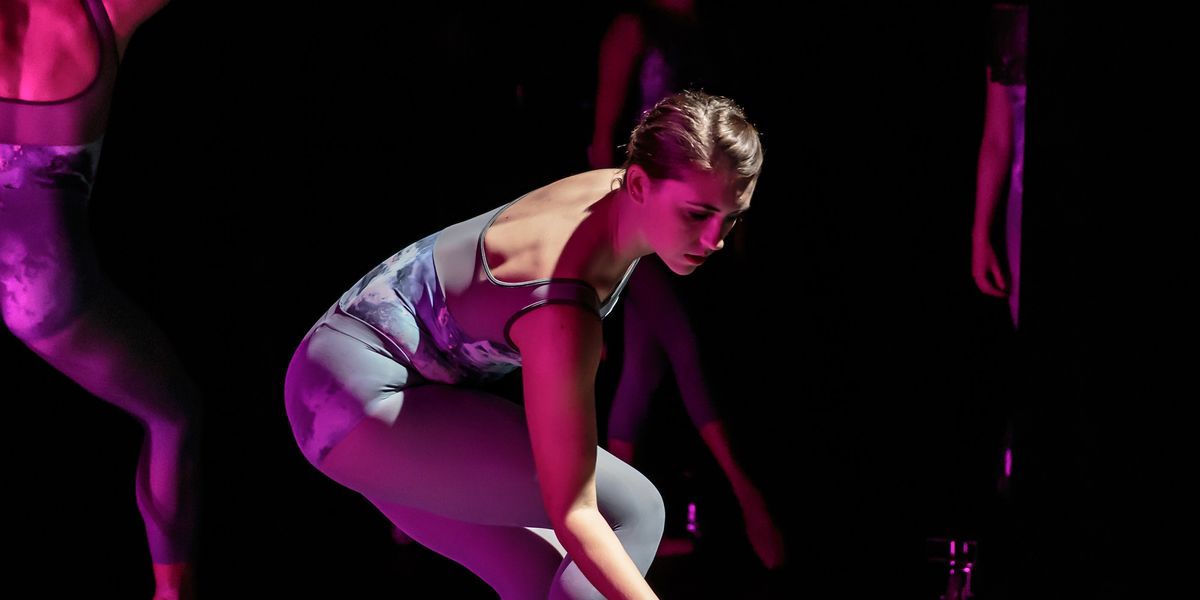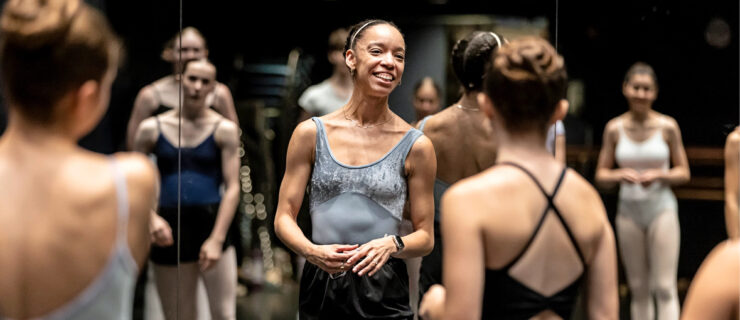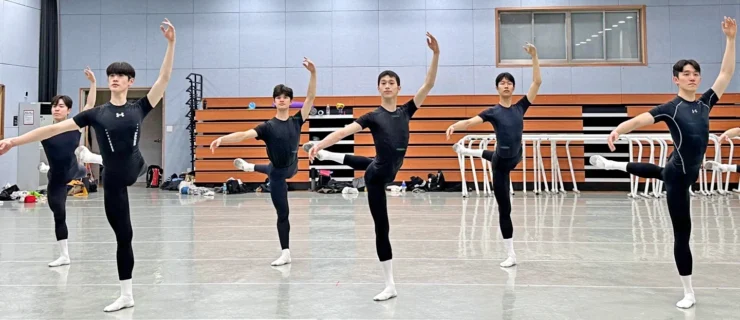Beyond the BFA: Can You Pursue a Non-Performance Dance Degree and Still Have a Stage Career?
This story originally appeared in the October/November 2016 issue of Pointe.
During his sophomore year at the University of Oklahoma, Austin Crumley switched the focus of his Bachelor of Fine Arts from ballet performance to ballet pedagogy. “I figured I already knew how to perform,” he says. “I wanted to take advantage of OU’s incredible faculty to learn something new.” The degree change didn’t close any doors for Crumley, who joined Sacramento Ballet this fall. However, he plans to focus on teaching after he retires. “The pedagogy degree turned a passion into a potential long-term career,” he says.
Some degree-seeking dancers opt to concentrate on dance studies outside the traditional performance track—from dance science or administration to dance media, pedagogy, or even cultural studies. And for many, these degrees can support long careers both onstage and beyond.
 Dance Theatre of Harlem’s Lindsey Croop opted for dual degrees from Butler University: a BS in dance-arts administration and a BA in strategic communications. Photo by Rachel Neville, Courtesy DTH.
Dance Theatre of Harlem’s Lindsey Croop opted for dual degrees from Butler University: a BS in dance-arts administration and a BA in strategic communications. Photo by Rachel Neville, Courtesy DTH.
The Road Less Traveled
Pedagogy, or teaching, degrees have long been an option for dance majors. But for those interested in eventually pursuing dance medicine or physical therapy, many schools now offer degrees in dance science or kinesiology. The business-minded may look for programs in dance administration or management (great for careers in marketing, fundraising and public relations), while tech-savvy dancers may consider a degree that combines dance with media (think film-editing and motion-capture technology). Often these more academically based dance tracks lead to a Bachelor of Arts (BA) or a Bachelor of Science (BS).
Katie Langan, chair for Marymount Manhattan College’s dance department, notes that graduates head in a wide variety of directions in the dance field (in addition to BFAs, MMC offers BAs in body, science and motion; dance and media; dance studies; and teaching dance arts). For instance, dance studies alums have found enriching archival work, while dance and media grads have become successful dance videographers or photographers, graphic designers or set designers.
 Crumley with Carly Seguall in Jock Soto’s “Someday” at University of Oklahoma. Photo by Mutz Photography, Courtesy OU.
Crumley with Carly Seguall in Jock Soto’s “Someday” at University of Oklahoma. Photo by Mutz Photography, Courtesy OU.
From Studio to Classroom
Dancers also hoping to graduate stage-ready, however, should look for schools that integrate their performance BFAs with nonperformance BAs or BSs. These programs will likely provide more access to the technique classes, performance opportunities and faculty advice necessary for pursuing a professional dance career.
When comparing programs, look for curriculum requirements and flexibility. At OU, Crumley transitioned smoothly from performance to pedagogy because of the program overlap. While he needed to take teaching courses, both tracks require students to take daily ballet class, as well as two semesters of modern. The difference comes down to performance requirements: Performance BFAs must audition for Oklahoma Festival Ballet every semester, whereas pedagogy BFAs only need to perform for four semesters.
Dance Theatre of Harlem’s Lindsey Croop opted for dual degrees from Butler University: a BS in dance–arts administration from the College of Fine Arts and a BA in strategic communications from the College of Journalism. Yet her dance requirements were almost identical to Butler’s performance track. The main differences: fewer semesters of technique and Butler Ballet (the performance component), and less space for advanced technique electives. However, BS students can take as many semesters of technique or Butler Ballet as they can fit in their schedules. Croop chose to keep up her ballet classes. “I needed to stay competitive for postgraduation auditions,” she says.
 Marymount Manhattan College’s body, science and motion majors in class. Photo Courtesy MMC.
Marymount Manhattan College’s body, science and motion majors in class. Photo Courtesy MMC.
Reaching Beyond Requirements
Not all nonperformance programs require as much physical dancing as those at OU or Butler. For example, there are fewer technique requirements for Marymount Manhattan’s BA students. “But they can take all the studio classes they want,” says Langan, adding that they are also free to submit choreography and can elect to perform.
Elon University’s dance science BS only requires four technique classes, and there are no performance requirements. However, Elon alum and Bodiography Contemporary Ballet dancer Nicole Ivan notes that dance science majors can still take advantage of the BFA program’s resources. “Those willing to have a more substantial schedule can fit in more technique classes per semester, and they are able to choose from the same classes as dance majors,” says Ivan, who graduated with a BS in dance science, BS in exercise science and BFA in performance and choreography. Furthermore, dance science majors are encouraged to audition for the season shows.
Ivan feels confident that she could have maintained her technique and graduated stage-ready with her BS in dance science alone. However, she notes that getting multiple majors is an excellent way to ensure both your academic and technique needs will be met within curriculum requirements.
 Croop in the studio. Photo by Rachel Neville, Courtesy DTH.
Croop in the studio. Photo by Rachel Neville, Courtesy DTH.
Career Ready
Eventually, Ivan plans to continue her studies in graduate school. “I can see myself going into dance medicine or dance therapy,” she says.
Croop doesn’t think she’ll ever leave the studio, but she stands by her decision to pursue a BS. “It comes in handy when writing a letter to your boss, using social media for self-promotion and understanding the general marketing concepts for running a company,” she says. Croop foresees a future using this knowledge as a ballet mistress.
Ultimately, opting to pursue a dance degree outside the traditional performance track tends to open more doors than it closes. “Dance goes far beyond the stage,” Langan says. “As with anything, the more broad-based you are, the more marketable you are. It’s not a fallback, it’s a career.”





